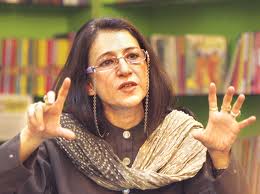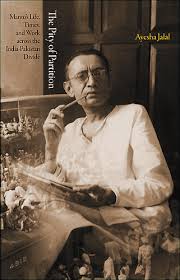This November, we are motivated to remember the books that made a difference in our lives, and to offer thanks to the authors for writing them. Giving thanks below are Mariam Zohra Durrani, Sonja Grgar, Sana Janjua, Randeep Purewall and Fauzia Rafique.
..
My ‘loved’ books
Journey to Ixtlan, Carlos Castenada
Affirmed personal metaphysical philosophy
Native Son, Richard Wright
Increased sociopolitical awareness about north america.
Primitive Offense, Dionne Brande
Influenced poetic work.
Sula, Toni Morrison
Touched by sula and toni.
Skeena, Fauzia Rafique
Healing; reincarnation of my ancestors and homeland.
Incognito, David Eagleman
Affirmed and empowered my personal metaphysical philosophy.
The Biology of Belief, Bruce H. Lipton
Affirmed and empowered my personal metaphysical philosophy.
A Woman’s Herbalist, Kitty Campion
Gave knowledge of herbs and techniques and concoctions.
Mariam Zohra Durrani
..
Books I am thankful for
Fools’ Crusade: Yugoslavia, Nato, and Western Delusions, Diana Johnstone
Academically rigorous exploration of the role of the West and NATO in the breakdown of Yugoslavia, and one that exposes many of the propagandist depictions of Serbia that were promoted by western mainstream media during that time.
Sophie’s Choice, William Styron
Artful and heartbreaking account of the effects of holocaust on those who have survived it, and on those of Jewish identity in general.
Anna Karenina , Leo Tolstoy
Complex and beautifully philosophical portrait of 19th century Russia and stifling social norms that drive its heroine to her demise.
The Namesake, Jhumpa Lahiri
Stunningly eloquent and touching portrayal of the immigrant experience in America, and the complexities of composite cultural identities.
The Tyranny of E-mail, John Freeman
A much needed and rare critical look at the often blindly celebrated cyber world we live in.
Geographies of a Lover, Sarah de Leeuw
An incredibly skillful book of erotic poetry that uses the raw imagery of BC landscape as a metaphor for the vigour and fullness of female sexuality
Skeena, Fauzia Rafique
A raw and brave account of a Pakistani woman’s life back home and in Canada, unflinching in its critical portrayal of patriarchy and chauvinism in both societies, yet laced with a warm, yet never sentimental, homage to the lead protagonist’s homeland
Sonja Grgar
..
I love these books
In the Skin of Lion, Micheal Ondaatje
An Equal Music, Vikram Seth
The Wretched of the Earth, Fanon, the God
The Golden Notebook, Doris Lessing
Black, George Elliot Clarke
The Buddha of Suburbia, Hanif Kureishi
The Little Match Girl, Hans Christian Anderson
Blindness, Jose Saramago
Native Son, Richard Wright
Sana Janjua
..
Thankful for the following books
A Diary of a Nobody, George and Weedon Grossmith
It’s hilarious, a delightful and touching “light” read. I come back to it time and time again, probably because of its main character, Charles Pooter who is one of the great figures in English comic literature.
Dream of a a Red Chamber, Cao Xueqin
Reading this book was an experience. I almost felt like I was living the life of its characters, set in 19th century China. And the supernatural Buddhist/Daoist themes lend it a “timeless,” mysterious feel.
Deewan-i-Ghalib, Ghalib
I am still reading and learning Ghalib’s verses. His poetry is complex, challenging and captivating. His verses can be philosophical, melancholic and irreverant, telling us not only much about Ghalib’s life but of the twilight of the Mughal era.
Skeena, Fauzia Rafique
This was my first Punjabi novel (which I actually read in its English edition). It was a novel that not only made an old literature sound contemporary but one that did so poignantly without being sentimental. The scenes in the novel are etched in my memory and I enjoyed how it dealt with “political” themes like class, poverty and patriarchy, without ever once sounding political.
Randeep Purewall
..
Thankful for every book read (to the end), but for some, more so.
Kafian, Madholal Hussain
Shah Hussain’s (Punjabi) poems emerged as songs in my childhood. Later, i realized, Kafian speaks to my totality in some way as it gives me a perspective to view and experience life. From then to now, if planning to travel for over a week, Kafian comes with me because it’s home.
Diwan-e-Ghalib, Assadullah Khan Ghalib
Mirza Ghalib’s collection of (Urdu) poems came upon me a little later than Kafian but in similar ways, and though a very different flavour, it also is a continuous source of pleasure and profundity.
Nausea, Jean-Paul Sartre
Though i love Sartre’s trilogy The Roads to Freedom, thanks must be given for Nausea that I read in early youth and there it made me understand why i was feeling nauseous all the time.
After, i found two incredible books that helped me to make sense of the world that was unfolding in the ’70s, notes on alienation in Economic and Philosophic Manuscripts of 1844 by Karl Marx and The Second Sex by Simone de Bouvois. Much gratefulness for both.
Power, Linda Hogan
Thanks to Linda Hogan for all her novels, they allowed me to ‘see’ and ‘feel’ the lived lives of her characters. As well, because in Toronto in the ’90s, i was having this recurring image of an upside down tree with roots as branches, and it was disturbing me to the point where i began to mention it to friends including poet Connie Fife, who later brought me three novels by Linda Hogan. And unbelievable though it was, i found the exact scene of an upside down tree in one. There also was a reason for it: a storm, and there were people who were able to deal with it. I did not understand why i was having it, i still don’t, but the stress went away.
The Satanic Verses, Salman Rushdie
Special thanks to Salman Rushdie for The Satanic Verses (with Midnight’s Children and Shame since they come out from and flow into each other), the work that launched a strong and permanent literary assault on religious bigotry and its contexts of oppression; the telling of a story that showed us what literature can do. In its aftermath, the Author’s insistence on our right to freedom of expression, to discuss and to confront extremism, continues to strengthen the secular movement. The usage and expression is as revolutionary as the content. The Satanic Verses also is my most valued Banned Book.
The Beloved, Toni Morrison
Thanks to Toni Morrison for The Beloved, an unbelievable story of courage and endurance, of heroic survival and resistance, that claimed from me all the buried emotions of women’s system-sanctioned stoning-lynching-gangraping deaths, confinement and torture. I’m in awe of Toni Morrison for telling this story the way she has though i may not dare read it again.
Fauzia Rafique
..
Inspired by
PEN American Centre‘s Facebook post ‘Giving Thanks for Books’
.
.

 Available in Punjabi and Urdu
Available in Punjabi and Urdu









